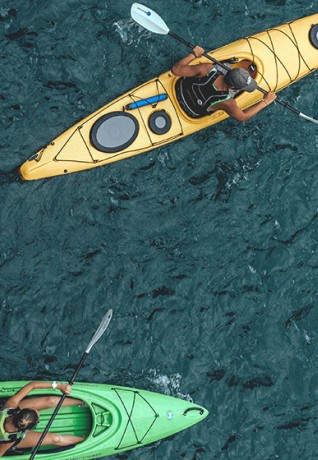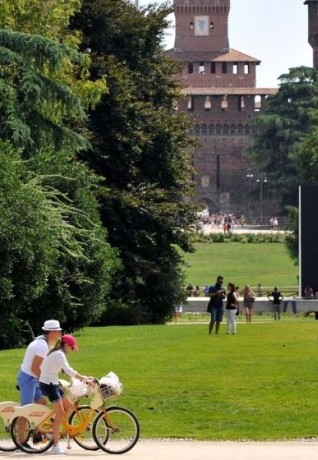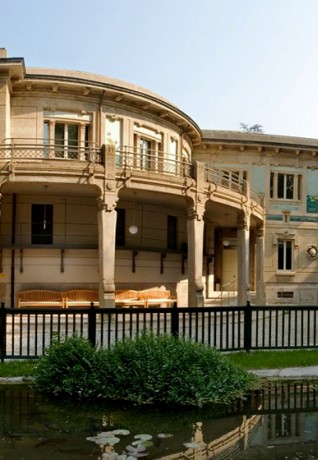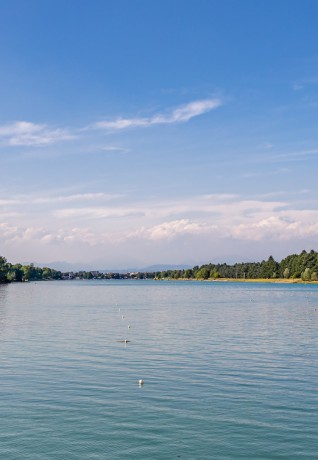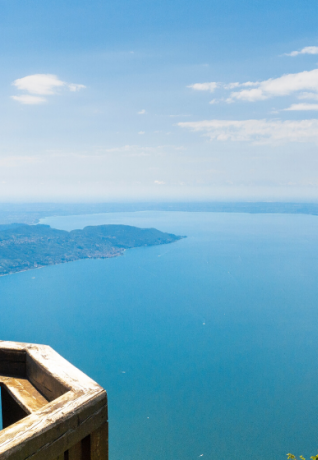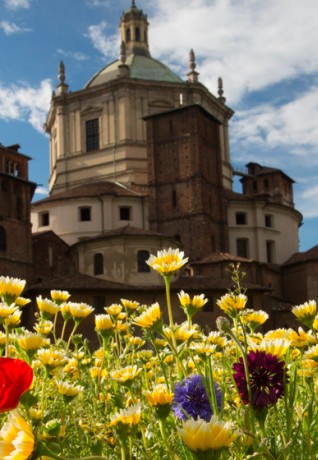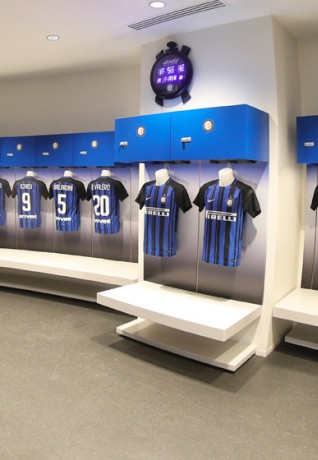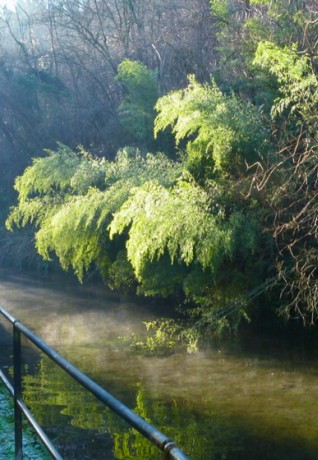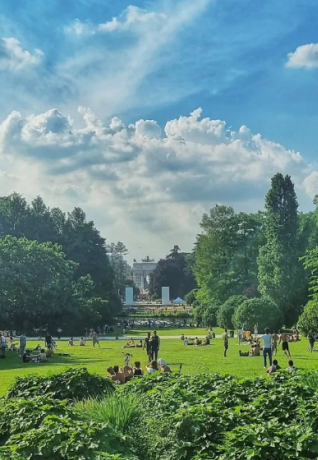Bicycle route on the Naviglio Grande
Bike route from Milano to Abbiategrasso (20 km)
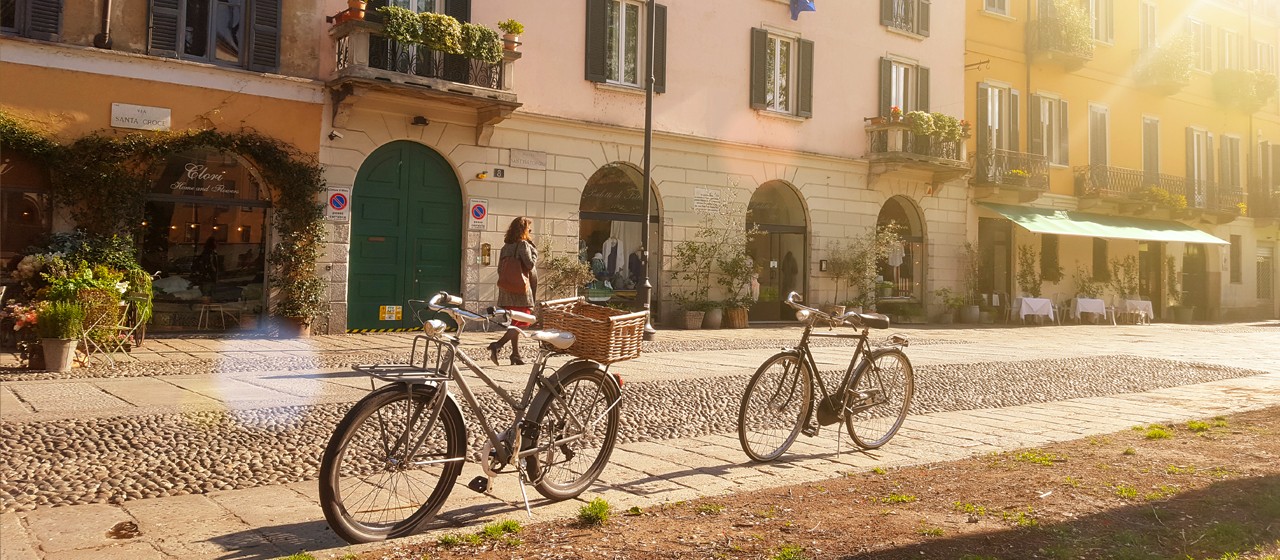
THE NAVIGLIO GRANDE
BIKE RIDE FROM MILANO TO ABBIATEGRASSO (20 km)
The Naviglio Grande connects Milano’s Darsena dockland area to the Ticino river.
Our bike itinerary starts from Porta Genova station.
The lively Navigli area is now almost entirely pedestrian, packed with restaurants and bars serving at outdoor tables.
This route is not a service towpath, completely flat and paved but without a parapet, and may be used with a 15 Km/h speed limit.
Starting from Porta Genova station, with the Naviglio on your left, you cannot miss the Church of San Cristoforo. A complex consisting of two churches (13th and 14th century). In early January 1489, Gian Galeazzo Sforza, heir to the Duke of Milano – then the most opulent court in Italy - and Isabel of Aragon, his bride, disembarked here with their cortège, returning from their grand nuptials in Naples. This has since made the church a favourite place for Milanese weddings. Its evocative location, close to the Naviglio and next to the pedestrian bridge, has made it in time a very popular spot for painters as well.
Two historic sports clubs - Canottieri Milano and Canottieri Olona - are both located along the towpath: both promote various activities, with a focus on rowing on the Navigli.
The next stop after Corsico is Trezzano sul Naviglio, an agricultural village that grew up around two convents - one Carthusian and the other Cistercian - still visible today, even if they have long been transformed into private homes. The real cycle path begins here, parallel to the ring road.
Cyclists can stop to fill their water bottles at the Casa dell’acqua, a public drinking fountain equipped with taps for chilled carbonated or natural water.
Soon after Trezzano sul Naviglio, you will catch a glimpse of the first meadows of Milano’s Parco Agricolo Sud. The multi-coloured houses in Gaggiano mirror themselves in the calm waters of the canal, gently welcoming us to an agricultural area.
Gaggiano is an authentic architectural gem, meticulously restored by the Municipality and its residents. Of particular note is Villa Marino with its frescoes, the first and most apparent testimony of the large number of villas and country residences built by the nobility and the wealthy middle class along this stretch of canal.
Generally attributed to Massimiliano Stampa, it was subsequently purchased as a summer residence by the Genoese financier Tommaso Marino (hence the name), who became much more famous in Milano for commissioning the construction of Palazzo Marino, now the seat of the Milano City Hall.
In Gaggiano, the cycle path continues on the other bank of the Naviglio up to Abbiategrasso, where the canal curves northwards, entering the Ticino valley and its magnificent natural park. Continuing west, you will reach Castelletto, a once-fortified location graced by the majestic seventeenth-century Palazzo dei Cittadini (that belonged to a noble Milanese family) and the seventeenth-century Casa della Regia Camera, or del Custode, the seat of the Naviglio Grande’s Commissioner.
If you then continue for one kilometre, you will enter Abbiategrasso, our final destination, where you can admire the basilica of S. Maria Nuova, accessible via an irregular-shaped Renaissance four-sided portico: on the facade you will see the wide harmonious nave of the stone pronaos, left unfinished in 1497 by Donato Bramante.
Strolling through the pedestrianized historical centre you will come across a fifteenth-century house with a wooden balcony at 2, via Borsani, while in via Annoni you can visit the former Monastery of St. Chiara, a small neoclassical gem renovated as the Pia Casa degli Incurabili rest home by Leopoldo Pollack, the architect of the Villa Reale in Milano.
You cannot really leave Milano without a visit to the Navigli: and there is no better way to admire them than on a bike. The original canal system of the Lombard Navigli (there are now five - Bereguardo, Grande, Martesana, Paderno and Pavese - is among the oldest in Europe.
Built starting from the 12th century, they enabled Milano to connect with Lake Maggiore (through the Ticino River), with Lake Como (through the Adda River) and with the city of Pavia and the Po River. These were important waterways both for transport and for irrigation. The Candoglia marble used for the construction of the Milano Duomo was carried on barges along the Navigli all the way from the quarries in Val d'Ossola, in present-day Piedmont.
Over the centuries, a world sprung up along the banks of the canals: noble summer residences, mills, castles, abbeys, and beautiful rural and natural landscapes that have led in time to a major cultural heritage area for the whole region.

 Log in
Log in




